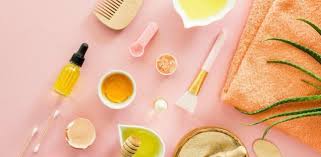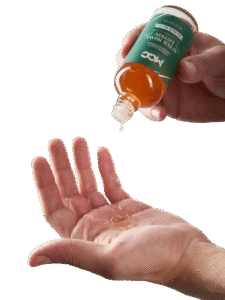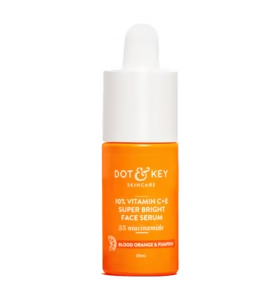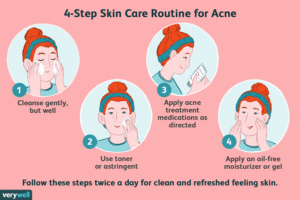If you’ve ever flipped over a skincare product and felt lost in a sea of confusing ingredient names, you’re not alone. With so many active ingredients being talked about online—Vitamin C, Niacinamide, Hyaluronic Acid—it’s easy to feel overwhelmed. But understanding the key ingredients in your skincare can help you make smarter, more effective choices for your skin.
In this guide, we’ll break down the top 10 skincare ingredients that everyone should know about—what they do, who they’re best for, and why they’re worth paying attention to.
1. Niacinamide (Vitamin B3)
What it does:
Niacinamide is one of the most versatile ingredients in skincare. It helps to:
- Control oil production
- Minimize the appearance of pores
- Fade dark spots and hyperpigmentation
- Strengthen the skin’s natural barrier
Best for:
All skin types—especially oily, acne-prone, or sensitive skin. It’s gentle and pairs well with most other ingredients.
How to use it:
Often found in serums, toners, and moisturizers. Safe for both morning and evening use.
2. Vitamin C
What it does:
Vitamin C is a powerful antioxidant that:
- Brightens dull skin
- Helps fade sun spots and acne marks
- Stimulates collagen production
- Protects against environmental stressors
Best for:
People dealing with dullness, uneven tone, or early signs of aging.
How to use it:
Typically used in morning serums. It should always be followed by sunscreen to enhance its protective effects.
3. Hyaluronic Acid
What it does:
Hyaluronic Acid is a humectant, meaning it attracts and holds onto water. It:
- Provides intense hydration
- Plumps the skin
- Reduces the look of fine lines caused by dryness
Best for:
All skin types—especially dry, dehydrated, or aging skin.
How to use it:
Apply to damp skin and seal it with a moisturizer. Can be used morning and night.
4. Salicylic Acid (BHA)
What it does:
Salicylic Acid is an oil-soluble exfoliant that:
- Penetrates deep into the pores to remove excess oil
- Helps clear blackheads and whiteheads
- Reduces acne and prevents future breakouts
Best for:
Oily and acne-prone skin.
How to use it:
Found in face washes, toners, and spot treatments. Start with 2–3 times per week and increase based on skin tolerance.
5. Retinol (Vitamin A derivative)
What it does:
Retinol is a powerful anti-aging ingredient that:
- Boosts collagen production
- Speeds up cell turnover
- Improves skin texture
- Reduces fine lines, wrinkles, and pigmentation
Best for:
Aging skin, acne-prone skin, or anyone looking to improve texture and clarity.
How to use it:
Start with a low concentration, apply at night only, and always follow with a moisturizer. Use sunscreen in the morning as retinol can make your skin more sensitive to sun.
6. Ceramides
What they do:
Ceramides are lipids (fats) naturally found in your skin. They help:
- Maintain the skin’s barrier
- Lock in moisture
- Prevent dryness, irritation, and sensitivity
Best for:
Dry, sensitive, or compromised skin.
How to use them:
Typically found in moisturizers and cleansers. Gentle and safe for daily use.
7. Glycolic Acid (AHA)
What it does:
Glycolic Acid is an alpha hydroxy acid (AHA) that exfoliates the skin’s surface. It:
- Removes dead skin cells
- Improves skin texture
- Reduces dark spots and fine lines
Best for:
Normal to dry or dull skin. Not ideal for very sensitive skin.
How to use it:
Usually found in toners, peels, or exfoliating serums. Start with once per week and increase gradually.
8. Centella Asiatica (Cica)
What it does:
Cica, or “tiger grass,” is known for its healing and anti-inflammatory properties. It:
- Soothes redness and irritation
- Helps repair the skin barrier
- Calms acne-inflamed or sensitive skin
Best for:
Sensitive, irritated, or acne-prone skin.
How to use it:
Commonly found in calming creams, serums, and face masks. Safe for everyday use.
9. Squalane
What it does:
Squalane is a lightweight oil that mimics your skin’s natural oils. It:
- Hydrates the skin without feeling greasy
- Strengthens the moisture barrier
- Soothes dry, flaky, or irritated areas
Best for:
All skin types, including oily and acne-prone skin.
How to use it:
Use as a final step in your skincare routine or mix with moisturizer. Great for sealing in hydration.
10. Azelaic Acid
What it does:
Azelaic Acid is a lesser-known gem that:
- Fades hyperpigmentation
- Fights acne and clogged pores
- Soothes redness and inflammation
- Reduces rosacea symptoms
Best for:
Sensitive, acne-prone, or pigmented skin.
How to use it:
Often found in creams or leave-on treatments. Can be used daily, depending on the formula.
Bonus Tips for Ingredient Success
- Patch test new products before full use to avoid reactions.
- Don’t mix everything at once—introduce actives slowly to see how your skin reacts.
- Sunscreen is non-negotiable, especially when using Vitamin C, acids, or retinol.
- Hydration and moisturization are key to making actives work without irritation.
Final Thoughts
Skincare isn’t just about trends—it’s about understanding your skin’s needs and choosing ingredients that work for you. Whether you’re targeting acne, dullness, or signs of aging, the right ingredients can make all the difference.
Start small, stay consistent, and don’t be afraid to experiment—your perfect routine is just a few ingredients away.



